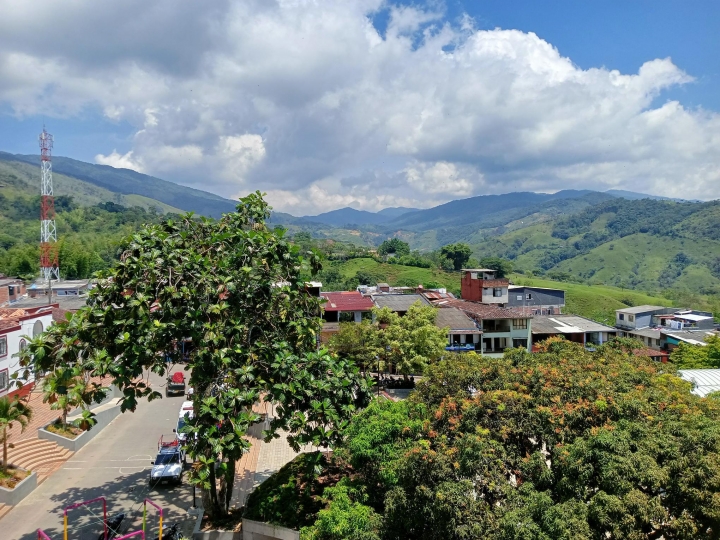Forests are ecosystems of rich biodiversity, home to 60,000 tree species, 80% of amphibian species, 75% of bird species and 68% of the world's mammal species.
Societies also benefit from and are highly dependent on forests. It is estimated that more than half of the world's GDP depends largely on the ecosystem services provided by forests. The forest sector contributes more than USD 1.52 trillion to global GDP and employs 33,000,000 people.
Despite the importance of forests, global deforestation increased by 4 % in 2022 compared to 2021, with the loss of 6.6 million hectares of forest. This poses a threat to the goal of eliminating forest loss by 2030, according to a report.The study by Forest Declaration Assessment (FDA) -a coalition of civil society organisations that monitors global deforestation- found as well that the 2022 figures represent an acceleration of forest destruction and a reversal of the global commitment to eliminate forest loss by 2030.
Its extent is decreasing and the greatest losses are in Latin America. A total of 15 billion trees are felled each year worldwide, 95% of deforestation takes place in the tropics and this includes Latin American forests.
Colombia is among the countries in Latin America and the world that are losing the most hectares of forest. The most recent official figures indicate that by 2022, Colombia had natural forest cover in 52% of the continental and insular territory, 65.6% of the forests are in the Colombian Amazon. The monitoring of deforestation between 2001 and 2022 in Colombia reveals a cumulative figure of 3,306,393 ha. Only in 2022, 123,517 ha were lost.
The persistence of illegal activities such as land grabbing, illegal mineral and timber extraction, the action of illegal armed groups, informal land markets and the increase in cattle ranching seem to be some of the main causes of deforestation in Colombia.
In 2016, the same year in which the Colombian government and the Revolutionary Armed Forces of Colombia (FARC) guerrillas signed a peace agreement to end an internal war that lasted nearly half a century, hectares of Amazonian forests began to shrink, as deforestation increased by 44 per cent over the previous year.
For decades the war slowed down colonisation in southern Colombia, preventing high deforestation, but after the signing of the peace agreement the dynamics changed. Currently, most of this logging activity is concentrated in the Amazonian forests (65%).
Grassroots social organisations key to forest protection
The work of grassroots social organisations and defenders in protecting forests is crucial to reducing deforestation and its consequences. Two civil society-led initiatives show the importance of community ownership in defending forests in Antioquia and Caquetá, Colombia.
In the department of Antioquia, in the municipalities of San Luis and San Carlos in northwestern Colombia, local communities are working to identify and develop economic alternatives based on the forest and its ecosystem services. According to the Corporación de Estudios, Educación e Investigación Ambiental (CEAM): "the agriculture and grazing currently being developed has resulted in the loss of primary forest and a landscape composed of high and low stubble fields with a high degree of degradation of plant communities, species and genetics".
In this sense, CEAM is working on cultural and economic transformation to reduce deforestation and forest degradation in the La Tebaida Regional Protected Forest Reserve. Around 30 peasant farmers from San Luis and San Carlos are participating in this initiative. Through a diploma course called 'Rurality, Forests and Peace', they are strengthening their knowledge of public policies, biodiversity, sustainable use, ecosystem services and the sustainable use of non-timber forest products.In addition, the peasants have developed training sessions, field trips, identification and monitoring of seed sources for the ecological restoration of the Reserve, and a self-protection protocol for leaders and environmental defenders that seeks to reduce the risks for those who protect and defend the forests.
In the department of Caquetá, with the aim of mitigating the impacts of deforestation, the Corporación para el Desarrollo Sustentable para el Piedemonte Andino-Amazonico (CORDESPA) is developing an environmental governance project as a forest protection mechanism in the Alto Fragua Indi Wasi National Natural Park, in the Sarabando river basin, an Andean-Amazon transition zone.
The Sarabando river basin was previously identified by coca crops and the presence of armed groups, but nowadays the inhabitants have a different view of the place through their work. Additionally, in the future, this initiative seeks to influence the Land Use Planning Scheme and manage the sustainable implementation of their dreams and needs, the self-recognition of the territory by the families, the strengthening of capacities in methodologies for biodiversity monitoring and the signing of a community conservation agreement for the protection of the Basin's forests.
--
On International Forest Day (21 March) we highlight the work of grassroots social organisations and defenders who are on the frontline of forest care and protection. Aware that this work is key to reducing deforestation and the devastating consequences that this activity entails, in Colombia, the Norwegian Human Rights Fund (NHRF) promotes local initiatives to protect forests through the Forests, Environment and Human Rights Programme.
--
Cover: La Tebaida Regional Protected Forest Reserve. Credit: Germán Barrera/NHRF.

